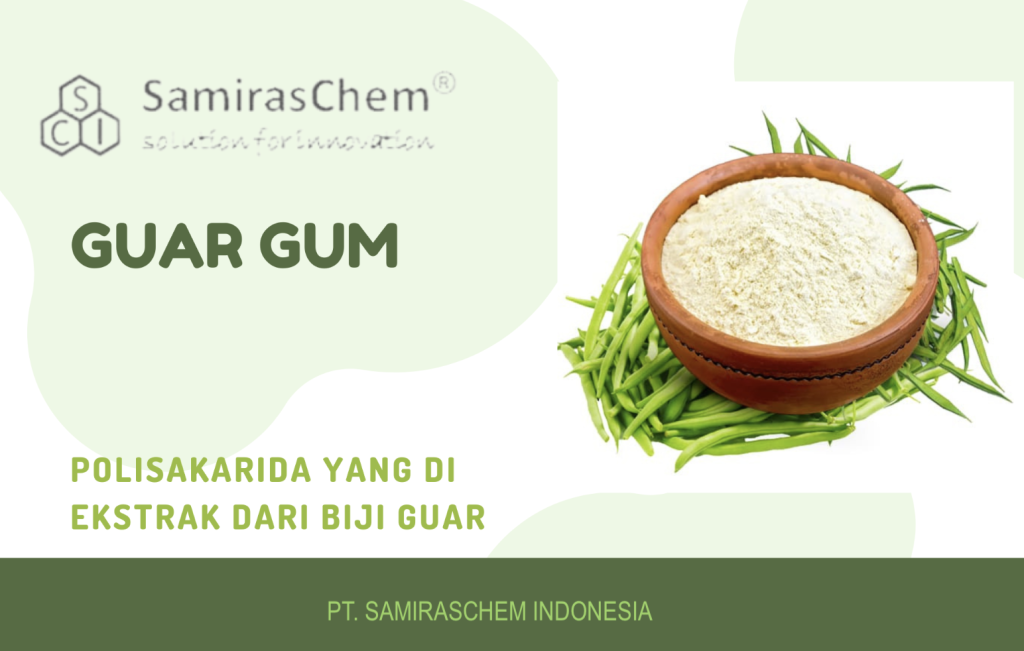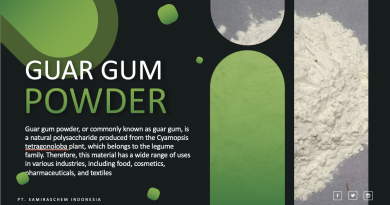
Supplier Guar Gum
Guar gum, a natural hydrocolloid derived from the seeds of the guar plant (Cyamopsis tetragonoloba), plays a pivotal role in the textile industry. Its exceptional thickening, stabilizing, and film-forming properties have made it an indispensable component in various textile processes. Moreover, the wide-ranging applications — from supplier guar gum, known for its high-quality product, coupled with its eco-friendly nature, underscore its significance in modern textile manufacturing.
Overview of Supplier Guar Gum Properties
Guar gum exhibits remarkable characteristics that contribute to its versatility. First and foremost, it has a high viscosity even at low concentrations, making it a cost-effective thickening agent. Furthermore, it is highly soluble in cold water and forms a viscous colloidal solution. Guar gum also possesses excellent film-forming properties, which are particularly valuable in the sizing and finishing stages of textile production. Additionally, its compatibility with other additives and chemicals enhances its utility in diverse formulations. Notably, its natural origin and non-toxic nature further contribute to its appeal, especially in an industry increasingly leaning towards sustainable practices.
The molecular structure consists of a linear chain of mannose and galactose units, which facilitates its ability to form hydrogen bonds with water molecules. This unique structure is what gives guar gum its exceptional viscosity-enhancing capabilities. Similarly, is known for its shear-thinning behavior, meaning its viscosity decreases under stress and returns to its original state once the stress is removed. This property is particularly beneficial in applications such as printing, where ease of application and consistency are critical.
Applications in the Textile Industry
Guar gum’s primary applications in the textile sector include printing, sizing, and finishing. Each application leverages its unique properties to improve efficiency and product quality. Let’s delve into each of these areas in detail.
1. Textile Printing
Guar gum serves as a thickening agent in textile printing pastes. Specifically, its role is critical in ensuring uniform distribution of dyes and pigments on fabrics. By stabilizing the printing paste, prevents bleeding or spreading, thus enhancing print sharpness and color uniformity. Moreover, its film-forming ability ensures that the dye adheres well to the fabric during the steaming and washing processes.
Modified guar derivatives, such as carboxymethyl and hydroxypropyl, are often used in printing applications to improve viscosity control and performance under varying conditions. Furthermore, these derivatives also exhibit better thermal stability, ensuring that the thickening properties are maintained even at high temperatures during processing. Consequently, is natural origin makes it an environmentally friendly alternative to synthetic thickeners, aligning with the textile industry’s sustainability goals. as provided by trusted supplier guar gum
The use in printing extends to various types of fabrics, including cotton, silk, polyester, and blends. Its compatibility with different dye systems, such as reactive, vat, and disperse dyes, further enhances its versatility. Therefore, by optimizing the rheological properties of printing pastes, guar gum ensures precise application and minimizes wastage, contributing to cost efficiency.
2. Fabric Sizing
In fabric sizing, guar gum is used to coat yarns, imparting strength and reducing breakage during weaving. Furthermore, its film-forming and adhesive properties create a protective layer on yarns, minimizing friction and enhancing durability. Guar gum’s ability to form flexible films ensures that the coated yarns remain pliable, reducing brittleness and breakage. Additionally, its compatibility with starch and other sizing agents allows manufacturers to develop customized formulations for specific fabric types and processing conditions.
Guar gum also aids in reducing hairiness in yarns, which is a common challenge during weaving. By providing a smooth and uniform coating, it ensures that the yarns pass through the loom with minimal resistance. Moreover, guar gum’s water solubility allows for easy removal during the desizing process, making it a practical choice for manufacturers. Thus, the use of guar gum in sizing not only improves the efficiency of weaving operations but also enhances the quality of the final fabric by ensuring uniform texture and appearance. (often sourced from a reliable supplier guar gum)
3. Finishing Processes
Guar gum finds applications in textile finishing, where it enhances the texture and appearance of fabrics. For instance, it acts as a softening and smoothing agent, providing a luxurious feel to the finished product. Additionally, guar gum’s water-binding capacity helps retain moisture, which is particularly beneficial in preventing shrinkage and maintaining the fabric’s dimensional stability. Moreover, its eco-friendly nature aligns with the growing demand for sustainable and biodegradable finishing agents.
In finishing applications, guar gum is often combined with other additives to achieve specific effects, such as wrinkle resistance, anti-static properties, and enhanced drapability. For instance, in the production of technical textiles, can be modified to provide flame-retardant or water-repellent properties. Consequently, its versatility makes it an ideal choice for a wide range of finishing treatments, from basic fabric enhancement to advanced functionalization.
Advantages of Using Guar Gum in Textiles
The advantages of guar gum in the textile industry extend beyond its functional properties. One of its primary benefits is cost-effectiveness, as it delivers high performance at relatively low concentrations. Additionally, is biodegradable and non-toxic, making it an environmentally friendly alternative to synthetic additives. Furthermore, its versatility and compatibility with other chemicals provide manufacturers with flexibility in developing tailored solutions for specific requirements. Another significant advantage is its ease of use, can be readily dissolved in water and incorporated into various formulations.
The ability of guar gum to enhance the efficiency of textile processes cannot be overstated. For example, in printing, it ensures consistent viscosity, enabling precise application of dyes and pigments. Furthermore, in sizing, it strengthens yarns and reduces breakage, leading to fewer disruptions during weaving. Similarly, in finishing, it improves the hand feel and appearance of fabrics, enhancing their market appeal. These benefits contribute to overall cost savings and improved product quality, making a valuable asset in the textile industry.
Challenges and Future Prospects
Despite its numerous advantages, the use of guar gum in the textile industry is not without challenges. One notable limitation is its sensitivity to microbial degradation, which can affect the stability and shelf life of formulations. However, advancements in guar gum derivatives, such as hydroxypropyl guar and cationic guar, have addressed many of these issues, offering enhanced stability and performance. Moreover, proper storage and the use of preservatives can mitigate microbial growth, ensuring the longevity of guar gum-based products. widely available through supplier guar gum
Another challenge is the variability in guar gum quality, which can impact its performance in industrial applications. Factors such as growing conditions, seed quality, and processing methods influence the final product’s properties. To address this, manufacturers are investing in quality control measures and sourcing guar gum from reliable suppliers. Consequently, the development of standardized production processes and certifications is also helping to ensure consistency and reliability.
Looking ahead, the future prospects for guar gum in the textile sector are promising. As sustainability becomes a key priority, the demand for natural and biodegradable additives expect to rise. Furthermore, innovations in guar gum modification and processing are likely to unlock new applications and improve efficiency. The integration of guar gum into smart textiles and advanced fabric technologies also holds significant potential for future growth.
For instance, can functionalize to impart antimicrobial or UV-resistant properties to fabrics, catering to the growing demand for performance textiles. Similarly, its role in reducing the environmental impact of textile manufacturing processes aligns with global efforts to promote sustainability. Consequently, by replacing synthetic thickeners and additives with natural alternatives like guar gum, the industry can achieve its environmental goals while maintaining high standards of quality and performance.
PT. Samiraschem Indonesia is Reliable Supplier Guar Gum with High Quality Product and Good Price. We are Serving and Delivered Area such Jakarta Bandung Semarang Jogja Surabaya Medan and Batam
In conclusion, guar gum’s exceptional properties and versatile applications make it a valuable asset in the textile industry. From printing and sizing to finishing processes, it enhances efficiency, quality, and sustainability. Although challenges such as microbial sensitivity and quality variability exist. Ongoing innovations are paving the way for its broader adoption and improved performance. Furthermore, as the textile industry continues to prioritize eco-friendly and cost-effective solutions. Guar gum poise to play an increasingly vital role in shaping the future of textile manufacturing. Its adaptability and potential for functionalization ensure that it will remain a cornerstone of sustainable and high-quality textile production for years to come.

